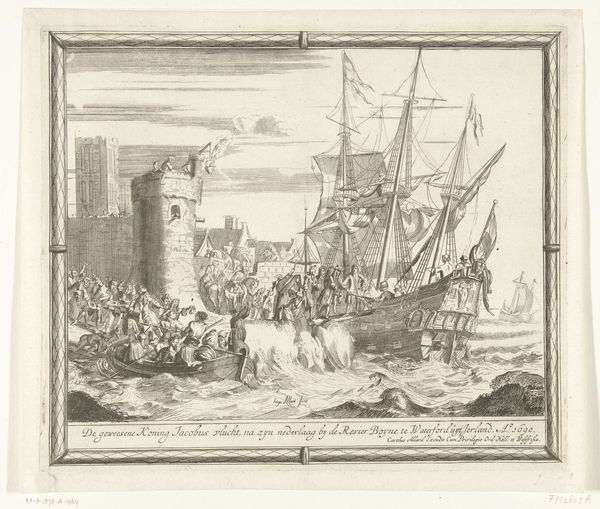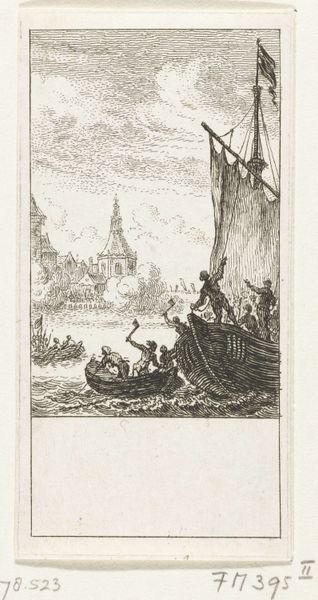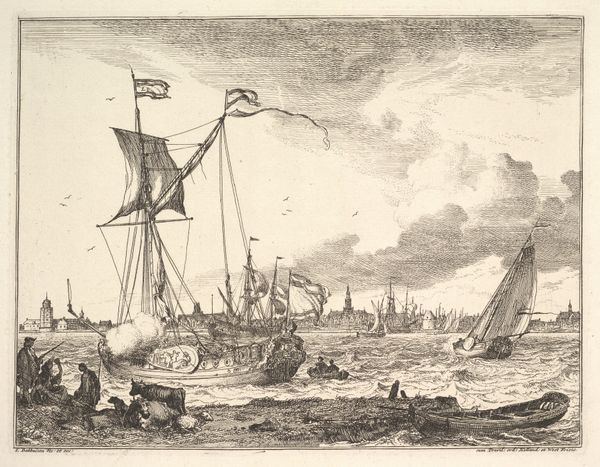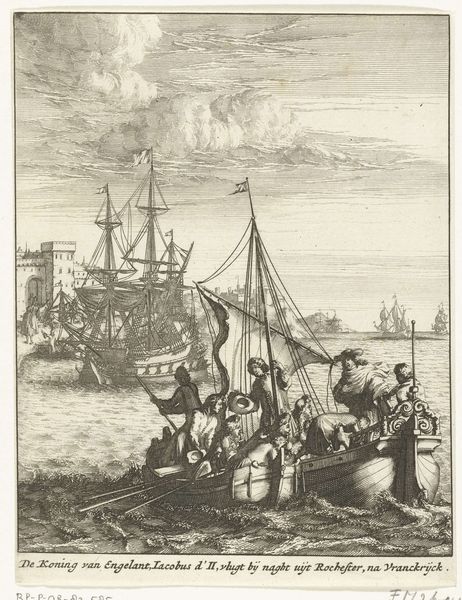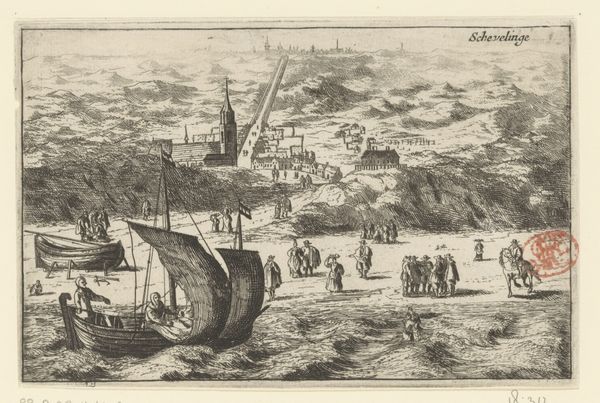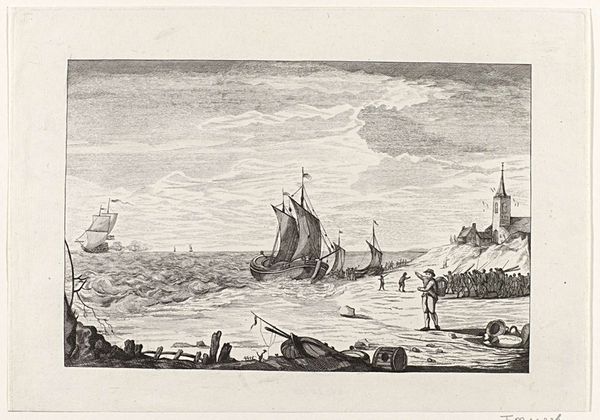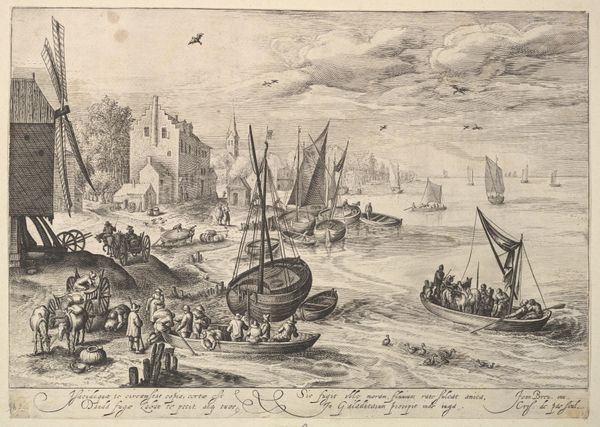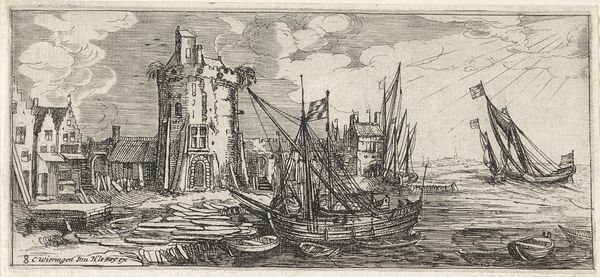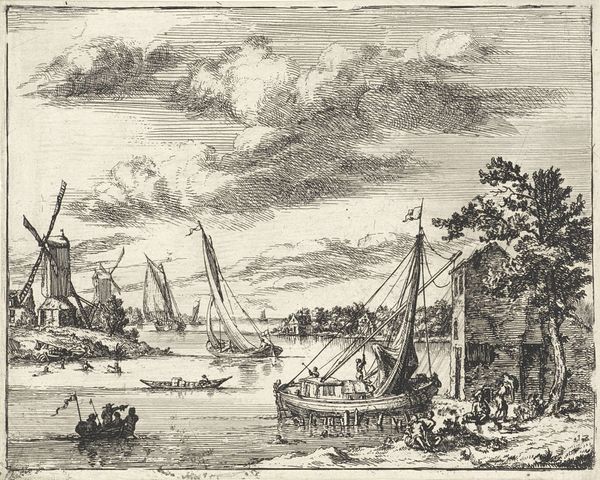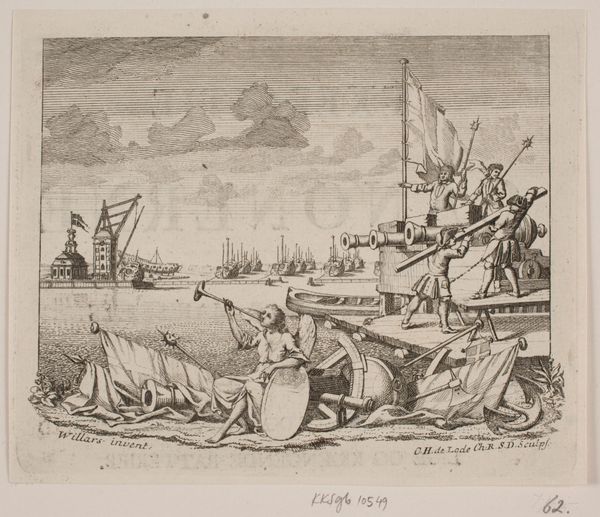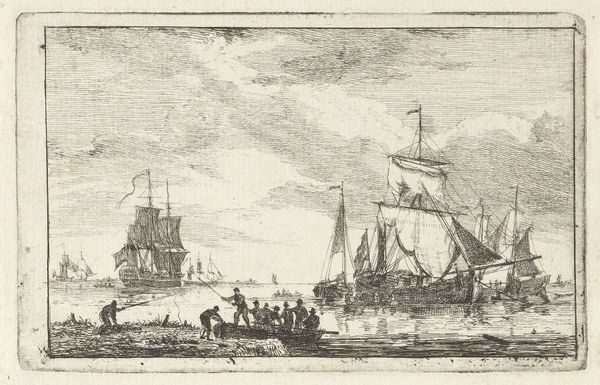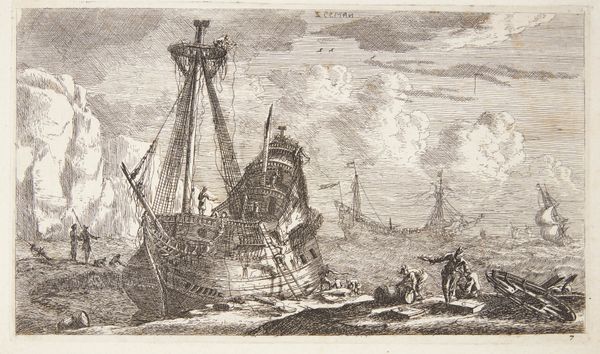
drawing, print, ink, engraving
#
pen and ink
#
drawing
#
pen drawing
#
dutch-golden-age
# print
#
pen illustration
#
pen sketch
#
landscape
#
ink
#
cityscape
#
genre-painting
#
engraving
Dimensions: height 83 mm, width 112 mm
Copyright: Rijks Museum: Open Domain
Editor: Here we have "Schepen met gewapende bemanning in een haven," or "Ships with Armed Crew in a Harbor," a pen and ink drawing by Simon Fokke, created sometime between 1722 and 1784. It's currently held at the Rijksmuseum. The scene is incredibly detailed, but also… turbulent. What story do you think this work is trying to tell? Curator: It’s a fascinating glimpse into the complexities of the Dutch Golden Age, far from the often-celebrated prosperity. The armed ships and tense figures tell us that mercantile success depended on the enforcement of colonial power, fueled by exploited labor and seized resources. It also captures how class intersects with it: notice the working-class crew in the foreground being ordered to conduct the acts that defend those power structures. How does it make you feel to witness the ships in action juxtaposed against the city in the background? Editor: Uneasy, definitely. There's something sinister about that contrast—like the supposed peace and order of the city depends on the potential for violence out at sea. Curator: Precisely. Fokke highlights the contradictions inherent in the Dutch Republic's pursuit of wealth. We should ask ourselves, who is benefitting, and at what cost? How do the anxieties of constant colonial conflict and maritime competition permeate all strata of society back home? What stories are erased, or simply absent from the frame? Editor: That's powerful. I hadn't really considered the colonial aspects beyond a generalized sense of "Dutch trade." Now, the details seem charged with historical tensions, implicating even the cityscape itself. Curator: By understanding the drawing’s place within this network of power, we can critically examine the legacy of colonialism in shaping not only the past, but our present. Does it shift how you perceive the drawing knowing it may serve that function? Editor: It does, profoundly. I came in thinking of it as a straightforward historical depiction. But now I see it as a complex visual document that speaks volumes about the relationships between power, violence, and economic prosperity, forcing me to question whose stories get told and whose are obscured. Curator: I am so glad to hear you say so. Thank you.
Comments
No comments
Be the first to comment and join the conversation on the ultimate creative platform.
